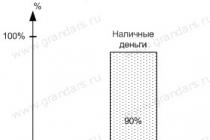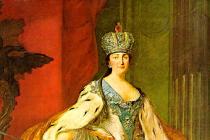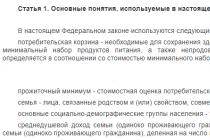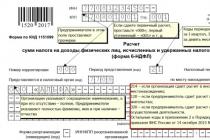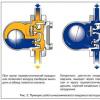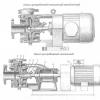It falls on the period from 1762 to 1796.
At this time, the Seven Years' War was coming to an end in Europe, and Russia was going through a period of rapprochement with Prussia and preparations for a war with Denmark, which Peter III was about to launch. Having come to power, Catherine II managed to remain neutral in the Seven Years' War, stop preparations for war with Denmark, and weaken and eradicate Prussian influence at her court.
Turkish question
The territories of the Black Sea, the North Caucasus and the Crimea were under the rule of Turkey. In 1768, under a far-fetched pretext (referring to the fact that one of the detachments of the Russian army entered the territory of the Ottoman Empire, pursuing the Poles participating in the uprising of the Bar Confederation), the Sultan of Turkey announced the beginning of the Russian-Turkish war, which lasted 6 years.
However, Russia won the war, and the territory of the Crimean Khanate formally became independent, but in fact became dependent on Russia. In addition, under the terms of the peace treaty, the northern coast of the Black Sea went to Russia.
In an attempt to return these territories, Turkey unleashed another war (1787 - 1792), which she also lost, and was forced to cede Ochakov and Crimea to Russia. The result of these two wars was a significant expansion of the territory of the Russian Empire: now the border with the Ottoman Empire was moved to the very Dniester. In addition, as a result of skillful manipulations by the empress, who managed to put a pro-Russian ruler on the throne of the Crimean Khanate, the Crimean Khanate also became part of Russia.
Polish question
The formal reason for intervening in the internal affairs of the Commonwealth, which included the Kingdom of Poland, was the demand to equalize the rights of Orthodox and Protestants with Catholics. As a result of pressure from Catherine II, August Poniatowski occupied the Polish throne, which resulted in the discontent of the Polish gentry and the uprising of the Bar Confederation, which was suppressed by Russian troops. Prussia and Austria, realizing that Russian influence in Poland had increased significantly, offered the Russian Empire to divide the Commonwealth.
The first partition took place in 1772, as a result, Russia received part of the Latvian lands and the eastern part of Belarus. The next division took place after the citizens of the Commonwealth, who opposed the adoption of the Constitution of 1791, turned to Russia for help. As a result of the division approved at the Grodno Seimas in 1793, Russia received the Right-Bank Ukraine and Central Belarus, including Minsk. And, finally, after the uprising of T. Kosciuszko, in 1795, the last, third partition took place, as a result of which the Commonwealth ceased to exist, and Russia expanded its territory by joining Western Belarus, Courland, Lithuania and Volhynia.
Georgian question
King Erekle II of Kartli-Kakheti turned to Russia to protect his state from the encroachments of the Persians and Turks, and the empress agreed, sending a small detachment to Georgia. After that, in 1783, the Russian Empire and the kingdom of Kartli-Kakheti signed an agreement (“Treaty of St. George”), according to which the kingdom became a protectorate of Russia in exchange for military protection.
Swedish question
Sweden, with the support of England, Holland and Prussia, invaded the territory of the Russian Empire, taking advantage of the fact that Russia was at war with Turkey. However, Russia managed to win here too, and as a result, sign the Treaty of Verel with Sweden (1790), according to the terms of which, the borders between the states remained unchanged.
Other countries
The foreign policy of the empress was aimed not only at expanding the territory of the empire, but also at strengthening Russia's position in the international arena. First of all, it normalized relations with Prussia (a union treaty was signed in 1764), which later made it possible to create the so-called Northern System - an alliance of several European states, including Russia and Prussia, against Austria and France.
In October 1782, Russia signed an agreement on cooperation with Denmark. During the Austro-Prussian war (1778 - 1779) Catherine II acted as an intermediary between the parties, essentially dictating her terms of reconciliation, and thereby restoring balance in Europe.
failures
Like almost any politician, Catherine II also had plans that did not materialize. First of all, this is the Greek project - plans to divide the Turkish lands together with Austria, as well as the Persian campaign with the aim of conquering large territories of Persia, and then Constantinople. The latter was not completed due to the death of the empress, although certain steps were taken.
Results and evaluation
The territory of the Russian Empire during the reign of Catherine II expanded significantly due to the annexed and conquered territories, the colonization of Alaska and the Aleutian Islands began. The position of the empire in Europe was also strengthened through the conclusion of numerous cooperation agreements. However, historians are ambivalent about the foreign policy of the empress. Some argue that the destruction of the sovereignty of the Commonwealth was unacceptable.
Critical attitude to the methods of Catherine II and her successors, Paul I and, later, Nicholas I. Nevertheless, the tasks that Catherine II faced as the ruler of one of the most powerful powers, she successfully solved, even if the means she chose were always adequate and far-sighted.
V. Eriksen "Equestrian portrait of Catherine the Great"
“Catherine made a double seizure: she took away power from her husband and did not transfer it to her son, the natural heir of her father” (V.O. Klyuchevsky).
Having ascended the Russian throne in this way, Catherine II began her reign by formulating the primary tasks for her activities:
- It is necessary to educate the nation, which should govern.
- It is necessary to introduce good order in the state, to support society and force it to comply with the laws.
- It is necessary to establish a good and accurate police force in the state.
- It is necessary to promote the flourishing of the state and make it abundant.
- It is necessary to make the state formidable in itself and inspire respect for its neighbors.
Let us now consider how Catherine II implemented these tasks.
The term "enlightened absolutism" is often used to characterize the domestic policy of Catherine II. Yes, under it the autocracy was strengthened, there was a strengthening of the bureaucratic apparatus. But the ideas of Diderot and Voltaire that every person is born free, that all people are equal, that despotic forms of government should be abolished - this did not correspond to her internal policy. Under Catherine, the situation of the peasants worsened, and the nobles received more and more privileges.
Domestic politics
Reformation of the Senate and Statutory Commission
According to the project of the statesman N.I. Panin in 1763 the Senate was reorganized. It was divided into six departments: the first was headed by the Prosecutor General, who was in charge of state and political affairs in St. Petersburg, the second - judicial in St. Petersburg, the third - transport, medicine, science, education, art, the fourth - military land and naval affairs, the fifth - state and political in Moscow and the sixth - the Moscow Judicial Department.
As for the Legislative Commission, it was created to systematize laws. But the meetings were held for only six months, after which the commission was dissolved. The main result of her activities was the approval of the title "Great" for the Empress (others were also proposed: "The Wise One", "Mother of the Fatherland" and others). Thus, it was not as a result of merit that she received such a title - it was ordinary court flattery.

D. Levitsky "Portrait of Catherine II"
Provincial reform
In 1775, the "Institution for the administration of the provinces of the All-Russian Empire" was adopted. Its essence was that three levels of administrative division were eliminated: province, province, county, and two were introduced: province and county. 50 provinces were formed (instead of 23). The provinces were divided into 10-12 counties. Governor General(viceroy) obeyed 2-3 provinces. He had administrative, financial and judicial powers. Governor ruled the province and reported directly to the emperor. Governors were appointed by the Senate. Treasury Chamber headed by the vice-governor was engaged in finance in the province. Land management - provincial surveyor. The executive body of the governor was the provincial board, which exercised general supervision over the activities of institutions and officials. Order of public charity oversaw schools, hospitals and orphanages, as well as estate judicial institutions: Upper Zemsky Court for Nobles, provincial magistrate, who considered litigation between townspeople, and Top violence for the trial of the state peasants. Criminal and Civil Chamber judged all classes, they were the highest judicial bodies in the provinces.
At the head of the county was police captain, leader of the nobility, elected for three years.
Was created conscientious court, called to reconcile those who argue and quarrel, he was classless. The Senate is the highest judicial body in the country..
216 new cities were formed (mostly large rural settlements renamed into cities). The population of the cities began to be called philistines and merchants. The main administrative unit was the city. At its head was mayor, he was endowed with all rights and powers. Strict police control was introduced in the cities. The city was divided into parts (districts) that were under supervision private bailiff, and parts were divided into quarters controlled by quarter supervisor.
According to historians, provincial reform led to a significant increase in the cost of maintaining the bureaucracy.
Founding of the Kuban and annexation of the Kalmyk Khanate
In 1771, Catherine II issued a decree on the liquidation of the Kalmyk Khanate and the annexation of the Kalmyk state to Russia. A special Expedition of Kalmyk affairs was established under the office of the Astrakhan governor, which began to take charge of the affairs of the Kalmyks. But this accession did not happen immediately: since the 60s, Catherine has consistently limited the khan's power, until a conspiracy to leave for their historical homeland, Dzungaria (a region of Central Asia in northwest China. A region with a semi-desert and steppe landscape) matured within the khanate . This turned out to be a great disaster for the people, who lost about 100 thousand people.
Other provincial reforms
The territory of Estonia and Livonia was divided into 2 provinces - Riga and Revel. Three provinces were created in Siberia: Tobolsk, Kolyvan and Irkutsk.
Economy
A state bank was established and the issue of paper money - banknotes - was established.
State regulation of prices for salt was introduced - it was one of the most valuable goods. But the state monopoly was not introduced, so the price of salt increased.
Exports have grown: sailing cloth, cast iron, iron, timber, hemp, bristle, bread - mainly raw materials and semi-finished products. And industrial products accounted for 80% of imports. Russian merchant ships began to enter the Mediterranean Sea.
Catherine II did not understand the significance of the development of industry, because. believed that this would reduce the number of employees.
Industry and agriculture developed mainly through extensive methods (increasing the amount of arable land). During her reign, famines were not uncommon in the countryside, which was explained by crop failures, but some historians believe that this was the result of massive grain exports.
During the reign of Catherine II, bribery and other forms of arbitrariness of officials flourished (what we now call corruption), she knew about it herself and tried to fight, but to no avail. As the historian V. Bilbasov writes, “Ekaterina soon became convinced herself that “bribery in state affairs” was not eradicated by decrees and manifestos, that this required a radical reform of the entire state system - a task ... that turned out to be beyond the reach of either that time or later.”
Historians note the exorbitant growth of favoritism under Catherine II, which did not contribute to the well-being of the state, but increased costs. They also received awards without any measure. For example, her favorite Platon Zubov had so many awards that he looked like "a seller of ribbons and hardware." During her reign, she gave away a total of more than 800 thousand peasants. For the maintenance of Grigory Potemkin's niece, she gave out about 100 thousand rubles annually, and for the wedding she gave her and her fiancé 1 million rubles. Near her was a crowd of French courtiers, whom she generously endowed. Large sums were paid to representatives of the Polish aristocracy, including King Stanislaw Poniatowski (in the past - her favorite).
Education and science
Catherine II paid special attention to women's education. In 1764, the Smolny Institute for Noble Maidens was opened.
Smolny Institute for Noble Maidens

Hood. Galaktionov "Smolny Institute"
This is the first women's educational institution in Russia. It was founded on the initiative of I. I. Betsky and in accordance with the decree of Catherine II in 1764 and was originally called the Imperial Educational Society for Noble Maidens. It was created to "give the state educated women, good mothers, useful members of the family and society."
Catherine, a fan of the progressive ideas of the French Enlightenment, wanted to establish an educational institution, which had no equal then in Europe. According to the charter, children entered the institution no older than six years of age and remained there for 12 years. Parents had to give a receipt that before the expiration of this period they would not pick up their children from the educational institution. The empress expected that the children would be removed from the ignorant environment and formed into educated people, thus, they would create a "new breed of people" in the future. The decree provided for the education of two hundred noble maidens in the newly built Novodevichy Convent. At first it was a closed institution for noble children, and in 1765 a department was opened at the institute “for petty-bourgeois girls” (non-noble estates, except for serfs). The building for the Meshchansky School was erected by the architect Y. Felten.

K.D. Ushinsky
In 1859-1862. K. D. Ushinsky was the inspector of classes at the institute, who carried out a number of progressive transformations in it (a new seven-year curriculum with a large number of hours devoted to the Russian language, geography, history, natural science, etc.). After Ushinsky's forced departure from the institute, all of its major transformations were eliminated.
Pupils of the institute wore uniform dresses of a certain color: at a younger age - coffee, at the second - dark blue, at the third - blue and at an older age - white. Lighter colors symbolized increasing education and accuracy.
The program included teaching Russian literature, geography, arithmetic, history, foreign languages, music, dancing, drawing, secular manners, various types of housekeeping, etc.
The emperor and members of his family attended the final public examination. At the end of the institute, the six best graduates received a "cipher" - a gold monogram in the form of the initial of Empress Catherine II, which was worn on a white bow with gold stripes.
Some pupils of the institute became ladies-in-waiting of the court (the ladies-in-waiting made up the retinue of empresses and grand duchesses).
The training course of the institute was equated to the course of women's gymnasiums.
In October 1917, the Institute, headed by Princess V.V. Golitsyna, moved to Novocherkassk.
The last Russian issue took place in February 1919 in Novocherkassk. Already in the summer of 1919, the institute left Russia and continued to work in Serbia.

"Cipher" of the best graduates of the Smolny Institute
Under Catherine II, the Academy of Sciences became one of the leading scientific bases in Europe. An observatory, a physics office, an anatomical theater, a botanical garden, instrumental workshops, a printing house, a library, and an archive were founded. In 1783 the Russian Academy was founded. Russian Academy(also Imperial Russian Academy, Russian Academy) was created by Catherine II and Princess E. R. Dashkova on the model of the French Academy for the Study of the Russian Language and Literature in St. Petersburg. The main result of this product of the Russian Enlightenment was the publication of the Russian Academic Dictionary. In 1841 the academy was transformed into the 2nd Department of the Imperial St. Petersburg Academy of Sciences.
But historians do not appreciate the achievements in the field of education and science under Catherine II: educational institutions have always experienced a shortage of students, many students could not pass exams, and studies were not well organized.
Under Catherine, Orphanages for homeless children were organized, where they received education and upbringing. To help widows, the Widow's Treasury was created. The fight against epidemics during her reign began to take on the character of state events.
National politics
Catherine II in 1791 established the Pale of Settlement for Jews: on the lands annexed as a result of the three partitions of Poland, as well as in the steppe regions near the Black Sea and sparsely populated territories east of the Dnieper. The conversion of Jews to Orthodoxy removed all restrictions on residence. The Pale of Settlement contributed to the preservation of Jewish national identity, the formation of a special Jewish identity within the Russian Empire.
In 1762, Catherine II issued a manifesto "On allowing all foreigners entering Russia to settle in which provinces they wish and on the rights granted to them." There was a list of benefits for immigrants. So arose German settlements in the Volga region reserved for migrants. The influx of German colonists was very large, already in 1766 it was necessary to temporarily suspend the reception of new settlers until the settlement of those who had already entered. During the reign of Catherine, Russia included Northern Black Sea region, Sea of Azov, Crimea, Right-bank Ukraine, lands between the Dniester and the Bug, Belarus, Courland and Lithuania.

Monument to Catherine II in the city of Marx, Saratov region
But this seemingly positive phenomenon turned out to be incidental - the "strife of interests" intensified when the indigenous population turned out to be in a worse situation and when some Russian nobles in the late 18th - early 19th centuries. as a reward for their service, they were asked to “record as Germans” so that they could enjoy the corresponding privileges.
Under Catherine, the privileges of the nobility were further strengthened. Peasants made up about 95% of the population, and serfs - more than 50% of the population. According to the general opinion of historians, the position of this largest group of the population in the era of Catherine was the worst in the history of Russia. Trade in peasants reached a wide scale: they were sold in the markets, in advertisements on the pages of newspapers; they were lost at cards, exchanged, given, forcibly married. She adopted a number of laws that worsened the situation of the peasants. During her reign, she gave away more than 800,000 peasants to the landowners and nobles. The result of this policy was the Peasants' War of 1773-1775.
Catherine pursued a policy of religious tolerance; in the first years of her reign, the persecution of the Old Believers ceased. She even supported the initiative of Peter III to return the Old Believers from abroad. But on the other hand, the number of Protestants (mainly Lutherans) increased due to the mass migration of Germans to Russia.
pretenders to the throne
Catherine's coming to power illegally gave rise to a series of contenders for the Russian throne: from 1764 to 1773. seven False Peters III appeared in the country (who claimed that they were “the resurrected Peter”), Emelyan Pugachev became the eighth. And in 1774-1775. the “case of Princess Tarakanova” was added, posing as the daughter of Elizabeth Petrovna.
During her reign, 3 conspiracies against her were uncovered, two of them were associated with the name of Ivan Antonovich (Ivan VI), who at the time of accession to the throne of Catherine II was imprisoned in the Shlisselburg fortress.
Freemasonry is gaining more and more popularity in the circles of the educated nobility. Catherine II tried to control Freemasonry and allow only such activities that did not contradict her interests.
Literature
Russian literature in the era of Catherine, as well as in the 18th century as a whole, according to a number of historians, was mainly engaged in "processing foreign elements." The "official" literature of the era of Catherine is represented by several well-known names: Fonvizin (read about him on our website:, Sumarokov, Derzhavin (read about him on our website:). There was also "unofficial" literature: Radishchev, Novikov, Krechetov, - which was subjected to a ban, and the authors - severe repressions.For example, Knyaznin, whose historical drama ("Vadim Novgorodsky") was banned, and the entire edition was burned.
Novikov's journal "Truten" was closed by the authorities in 1770 due to the fact that it raised acute social issues - the arbitrariness of the landowners against the peasants, corruption among officials, etc. The St. Petersburg Bulletin, which existed only a little over two years, and other magazines. In A. Radishchev's book "Journey from St. Petersburg to Moscow" there are no calls for the overthrow of the existing system and the abolition of serfdom. But the author was sentenced to death by quartering (after a pardon, it was replaced by a 10-year exile in Tobolsk) because his book "is filled with harmful philosophies that destroy public peace, detract from the respect due to the authorities ...". Catherine loved flattery and could not stand people who dared to express their critical judgments that ran counter to her own.
Culture and art under Catherine
Foundation of the Hermitage

Hall of the Hermitage
State Hermitage in St. Petersburg - the largest in Russia and one of the world's largest art and cultural-historical museums. The history of the museum begins in 1764, with collections of works of art that Catherine II began to acquire privately. Initially, this collection was housed in a special palace wing - the Small Hermitage (from fr. ermitage- a place of solitude), hence the common name of the future museum was fixed. In 1852, from a greatly expanded collection, it was formed and opened to the public. Imperial Hermitage.
To date, the museum's collection includes about three million works of art and monuments of world culture, from the Stone Age to the present day.
Founding of the Public Library

Old library building, early 19th century
In 1795, by the highest order of Empress Catherine II, Imperial Public Library. The basis of the Imperial Public Library is the Załuski Library (400,000 volumes), which was declared the property of the Russian government as a war trophy after the suppression in 1794 of the uprising led by Tadeusz Kosciuszko and the capture of Warsaw by A. Suvorov. At present, it is a particularly valuable object of national heritage and constitutes the historical and cultural heritage of the peoples of the Russian Federation. One of the largest libraries in the world.
Catherine II patronized various areas of art - architecture, music, painting.
The palaces of the era of Catherine II (Winter, Bolshoi Catherine, Catherine in Moscow) and the parks around them in their luxury and splendor were not inferior to the palaces and parks of the French kings and had no other equal in Europe. Everyone competes in the luxury of carriages, thoroughbred horses, brilliance of teams, the main goal is to appear no worse than others.
Catherine's foreign policyII

V. Borovikovsky "Catherine on a walk in Tsarskoye Selo Park"
Foreign policy under Catherine was aimed at strengthening the role of Russia in the world and expanding its territory. The motto of her diplomacy was: One must be on friendly terms with all powers in order to always retain the opportunity to take the side of the weaker ... to keep one's hands free ... not to drag one's tail behind anyone.
Under Catherine, the growth of Russia was as follows: after the first Turkish war in 1744, Russia acquires Kinburn, Azov, Kerch, Yenikale. Then, in 1783, Balta, Crimea and the Kuban region join. The second Turkish war ends with the acquisition of the coastal strip between the Bug and the Dniester (1791). Russia stands firmly on the Black Sea.
At the same time, the Polish sections give back Western Russia to Russia: in 1773, Russia receives part of Belarus (Vitebsk and Mogilev provinces); in 1793 - Minsk, Volyn and Podolsk; in 1795-1797 - Lithuanian provinces (Vilna, Kovno and Grodno), Black Russia, the upper reaches of the Pripyat and the western part of Volhynia. Simultaneously with the third section, the Duchy of Courland was annexed to Russia.
An important direction of the foreign policy of Catherine II was also the accession as a result of the Russian-Turkish wars of the territories of Crimea, the Black Sea region and the North Caucasus, which were under Turkish rule. The wars with Turkey were marked by major military victories for Rumyantsev, Suvorov, Potemkin, Kutuzov, and Ushakov.
In 1790, the Verel peace treaty with Sweden was signed, according to which the border between the countries did not change.
Relations between Russia and Prussia normalized, and an alliance treaty was concluded between the countries.
After the French Revolution, Catherine was one of the initiators of the anti-French coalition and the establishment of the principle of legitimism. She said: “The weakening of the monarchical power in France endangers all other monarchies. For my part, I am ready to resist with all my might. It's time to act and take up arms." But in reality, she abstained from participating in hostilities against France.
During the reign of Catherine the Russian Empire acquired the status great power. As a result of two successful Russian-Turkish wars for Russia, 1768-1774 and 1787-1791. the Crimean peninsula and the entire territory of the Northern Black Sea region were annexed to Russia. In 1772-1795. Russia took part in the three sections of the Commonwealth, as a result of which it annexed the territories of present-day Belarus, Western Ukraine, Lithuania and Courland. During the reign of Catherine, the Russian colonization of the Aleutian Islands and Alaska began.
During the long reign of Catherine II (34 years) there was a lot of good and bad. But we agree with the words of Catherine's contemporary, Russian historian and publicist Prince M.M. Shcherbatov, who wrote that the favoritism and debauchery of Catherine II contributed to the decline in the morals of the nobility of that era.
As a legacy from her predecessors, Catherine received three main directions in foreign policy. The first one is the northern one. The Swedes constantly sought to return the lands lost in the times of Peter the Great, but they did not succeed: the zenith of Sweden's greatness, achieved under Charles XII, was irretrievably lost under him. After the Northern War, the country could not restore its economic and human resources to a level sufficient for a successful war with Russia. This, however, did not exclude the presence in Stockholm of forces ready to take advantage of any opportunity to try their luck. St. Petersburg was well aware of the long-standing aspirations of the Swedes and was ready to fight back.
In the southern direction, for a long time the dream of the rulers of Russia was access to the shores of the warm Black Sea, which was dictated by the needs of the country's economy and defense. Here, the decades that have elapsed since the Prut campaign have made significant adjustments to the balance of power: the Ottoman Empire was declining, many European powers looked at its possessions with greed, while Russia was at the height of glory and power. Timidity before the Turks passed, and cautious defensive tactics were replaced by broad offensive plans and confidence in an early victory over the once formidable enemy. But it was impossible to defeat Turkey alone, and therefore, already in the time of Peter the Great, Russia was looking for an alliance with Poland and Austria. The condition for an alliance with Austria was Russia's support for the so-called "pragmatic sanction" - a document, according to Roma, after the death of Emperor Charles VI (he died in 1740), the throne was to pass to his daughter Maria Theresa. The Austrian government was so interested in supporting the "pragmatic sanction" that for the sake of this it was ready to make any concessions. The alliance with Austria led Russia to clash with Prussia in the Seven Years' War.
The third direction was also traditional - the Polish direction, which reflected Russia's desire to unite in the Empire all the lands inhabited by closely related Russian peoples - Ukrainians and Belarusians. In the XVIII century. The Commonwealth experienced about the same difficult times as the Ottoman Empire. While the neighbors developed industry and trade, created powerful armed forces and strong absolutist regimes, the Commonwealth could not overcome the separatism of magnates, get rid of political chaos (liberum veto, etc.), and became easy prey for its neighbors: Prussia, Austria and Russia. Already under Peter I, Russia did not hesitate to apply the methods of forceful pressure against Poland, which since that time have become common in Russian-Polish relations. The Russian Empire used the weakness of the Polish state to constantly interfere in its internal affairs and counteract the strengthening of this country. Poland became, in fact, a toy in the hands of Russia, which Catherine II was well aware of.
The international position of the Russian Empire at the time of Catherine II's accession to the throne was far from simple. The diplomatic successes of the reign of Elizabeth, reinforced by the courage of Russian soldiers on the battlefields of the Seven Years' War, were actually nullified by the impulsive policy of Peter III. The old foreign policy doctrine was destroyed, and the new one was no good. The financial situation was also difficult; the tired army did not receive a salary for eight months. However, other countries as a result of the war were no less weakened and they also had to redefine the direction of their foreign policy. In other words, Catherine II had a rare opportunity, almost without regard to the past, to re-develop her own foreign policy course. At the same time, Russia had certain advantages compared to other countries - it was the winner in the war, its army was still in Europe and at any moment could turn around again on a marching march. It is no coincidence that the news of the coup in St. Petersburg on June 28, 1762 plunged the European courts, especially the Prussian, into a state of shock. The weakness of others gave strength to Catherine, foreign diplomats noticed that from the first days of her reign she began to treat them proudly and arrogantly. This independent tone of the empress in dealing with foreigners impressed her closest circle, making a sharp contrast with the manner of Peter III, who fawned over Prussia.
The first period of Catherine's foreign policy (1762 - 1774)
Catherine II began her foreign policy activities by returning home Russian troops who were abroad, confirmed peace with Prussia, but rejected the military alliance concluded with her by Peter III. After that, the attention of the Prussian government was drawn to Courland - a small duchy in the territory of modern Latvia, formally under the rule of the Polish crown, but with autonomy rights and an elected duke at the head. Catherine set a goal to annex Courland to Russia and therefore considered it necessary to put her protege on the ducal throne, who was not connected in any way with the Polish king. Her candidate was Biron, the favorite of Anna Ioannovna, who was elected the Duke of Courland back in 1739. (From 1741 he was in exile, from where he was released by Peter III.) In carrying out the planned, Catherine II demonstrated toughness and determination, as if showing the whole world, what will be its foreign policy. To secure the crown for Biron, Russian troops were brought into Courland; as a result, the situation was so favorable for Russia that even then in 1762 Courland could have become part of Russia. But Catherine also wanted to show herself as a just ruler, so she wisely satisfied herself with what she had achieved, making Biron her vassal and ensuring the future entry of Courland into the empire (finally in 1795).
In the same 1762, Catherine decided to put her protege on the Polish throne. I had to wait until October 1763, when King August II (also a Russian protege) died and Russia immediately began decisive action. The new task, however, was more difficult, and for its solution it was necessary to enlist the non-intervention of other European powers. In March 1764, a new alliance treaty was signed with Prussia, according to which the parties agreed on joint actions in order to preserve the existing political system in Poland, which made it possible to influence Polish politics.
The alliance with Prussia ensured the non-intervention of Austria and France, which had their own candidates for the Polish throne. Russia's intentions were again reinforced by the introduction of Russian troops, as a result of which, in August 1764, the former favorite of Catherine, Stanislav Poniatowski, was elected king of Poland. This was a great victory, but only at first glance, since it was after these events that Russia got bogged down in Polish problems for a long time.
The powerful party of the princes Czartoryski, whose nephew was the newly elected king, sought to change the political system of Poland by introducing a hereditary monarchy, and in exchange for Russia's support promised to improve the position of the Polish Orthodox, the so-called dissidents. As a result, the country found itself in a very difficult position: public opinion in Russia itself had long insisted on helping dissidents, but to agree with the plans of the Czartoryskis meant changing the basic principles of their policy in Poland. As a result, Russia lost the support of a serious political force in Poland, and in 1768 the so-called Bar Confederation of Polish magnates opposed it, to fight against which Russian troops under the command of A.V. Suvorov were again brought into Poland. And although Suvorov's actions were generally successful, the solution of the Polish problem was only delayed.
Meanwhile, Russia's active actions in Poland began to worry Austria and France more and more. Their anxiety was also reinforced by the “northern system” of treaties between Russia and the Protestant states of Europe, conceived by N.I. Panin, the leader of Russian foreign policy at that time, aimed at strengthening Russia’s leading role in world politics. It was necessary to divert Russia's attention from European problems, and this was achieved as a result of a complex intrigue, when France and Austria managed to induce Turkey to declare war on Russia (autumn 1768). By this time, Catherine II had reigned for more than five years, but Russia was not yet sufficiently prepared for the war and entered it without much enthusiasm, especially since the military conflict with Turkey evoked unpleasant memories.
Entering the war with Turkey (1768 - 1774), the Russian government defined as the main goal the acquisition of the right to freedom of navigation on the Black Sea, the acquisition of a convenient port on the Black Sea coast, and the establishment of secure borders with Poland. The beginning of the war turned out quite well for Russia. Already in the spring of 1769, Russian troops occupied Azov and Taganrog, and at the end of April they defeated two large formations of Turkish troops near Khotyn, although the fortress itself was captured only in September. Then, in September-October 1769, Moldavia was liberated from the Turks, and Catherine began to call herself the Moldavian princess. In November, Russian troops took Bucharest. The Russian corps sent to Georgia also fought successfully. Finally, on June 24 - 26, 1770, the Russian fleet under the command of A.G. Orlov and Admiral G.A. Spiridov won a complete victory over the Turkish fleet, which was almost twice superior to it in the Chesme Bay. The Turks lost 15 battleships, 6 frigates and up to 50 small ships - almost their entire fleet. The Chesme victory made a great impression on Europe and served to strengthen the glory of Russian weapons.
After a short time, equally brilliant victories were won by the ground forces. In early July, the Russian army under the command of P. A. Rumyantsev defeated the combined forces of the Turks and Crimean Tatars at the confluence of the Larga River with the Prut. The Turks left more than 1000 people on the battlefield, the Russians lost only 29 people killed. On July 21, the famous battle on the Kagul River began, where the 17,000-strong detachment of Rumyantsev managed to defeat almost 80,000 enemy forces.
In July - October 1770, the fortresses of Izmail, Kiliya, Akkerman surrendered to the Russian troops. In September, General P.I. Panin took Bender. In 1771, Russian troops under the command of Prince V. M. Dolgoruky entered the Crimea and captured its main points within a few months.
It seemed that everything was going well, but the real state of affairs was not easy. Firstly, the war simultaneously in Poland (with the Confederation of Bars), in Moldavia, in the Crimea and in the Caucasus demanded an enormous strain of forces and laid an almost unbearable burden on Russia. Secondly, it became clear that the European powers would not allow a significant strengthening of Russia at the expense of Turkey, and therefore it was not necessary to count on the retention and annexation of all the lands seized during the war. Since 1770, Russia had been groping for the grounds for concluding peace, but Turkey, actively supported by Austria, did not want to make any agreements. Only participation in the first partition of Poland in 1772 prompted Austria to withdraw its support from Turkey.
The idea to profit at the expense of Poland arose in the early years of the reign of Catherine II. Prussia repeatedly made similar proposals in the 1960s. However, for the time being, Russia hoped to get the territories of Lithuania and Belarus, which were considered primordially Russian, while maintaining a nominally independent Poland as a buffer between Russia and Prussia. But when the war with the Confederates, supported by the Austrian side, took on a protracted character, the need for an agreement with Austria became clear in order to immediately untie both the Polish and Turkish problems.
Under these conditions, an agreement was born on the division of Poland, signed on July 25, 1772, according to which Russia received the Polish part of Livonia, as well as Polotsk, Vitebsk, Mstislav and part of the Minsk provinces; Galicia (now Western Ukraine) went to Austria, Pomeranian, Chelm and Malbork provinces, part of Greater Poland and Bazmia went to Prussia.
At first glance, Russia's share was the most significant: it acquired territories of 92 thousand square meters. km. with a population of 1 million 300 thousand people. But in reality, in strategic and economic terms, Russia's production was quite modest, because, for example, such an important economic and commercial center as Lvov turned out to be in the hands of Austria, and areas with the most developed agriculture were in the hands of Prussia. True, Russia for a long time kept what was left of the Commonwealth in its sphere of influence: until 1788, the Polish king could do practically nothing without the permission of the Russian ambassador in Warsaw. In 1776, King Stanislaw August Poniatowski, with the consent of Russia, carried out some reforms aimed at strengthening the Polish statehood, which stabilized the situation and made it possible in 1780 to withdraw Russian troops from Poland.
In 1774, after long negotiations, Russia managed to make peace with Turkey. According to the Kyuchuk-Kaynardzhysky Treaty (after the name of the village where peace was concluded), Russia finally received the right to free passage of its ships through the Bosphorus and Dardanelles, the fortresses of Kerch and Yenikale and a significant contribution. Turkey undertook to restore the autonomy of Moldavia and Wallachia, not to oppress the Orthodox in Transcaucasia, and also recognized the independence of Crimea, which, according to the plan of the Russian government, was to ensure its further entry into the Russian Empire.
The second period of Catherine's foreign policy (1775 - 1796)
The Kyuchuk-Kainarji peace ended the first period of Catherine II's foreign policy; the next (70-90s) was also marked by serious successes in the diplomatic and military spheres. The alignment of forces in the foreign policy arena changed somewhat at that time.
The lands acquired by Russia under an agreement with Turkey were wedged between the possessions of the Ottoman Empire, Poland and the Crimean Khanate, which in itself made new clashes inevitable. It was clear that Russia would continue to strive to gain a foothold in the Northern Black Sea region, and Turkey would oppose this in every possible way. Indeed, emboldened by internal troubles in Russia, the Turks significantly strengthened the garrisons of their fortresses on the northern coast of the Black Sea, flooded the Crimea and Kuban with agents, and the Turkish fleet demonstrated its power near the Crimean coast. At the same time, Turkey counted on the support of the European powers - the opponents of Russia, and primarily England. However, in 1775, England began a protracted war with the North American colonies and was even forced to turn to Russia with a request to provide her with 20,000 Russian soldiers to fight the rebels. Catherine, after hesitating, refused, but closely followed the development of the conflict, trying to use it to her advantage.
Meanwhile, in December 1774, a coup d'état took place in the Crimea, as a result of which Devlet-Giray ended up on the khan's throne, trying to establish contact with both Turkey and Russia at the same time. However, the Russian government needed an unequivocal supporter in Crimea, such as Shagin Giray. In order to erect him on the Khan's throne in the spring of 1776, Russian troops began to prepare for an invasion of the Crimea.
Support for Russia's actions in the Crimea was provided by the strengthening of the alliance with Prussia, a new agreement with which was signed in August 1776, and already in November the Russians entered the Crimea. In March of the following year, the treaty of friendship with Prussia was extended, and in April Shagin Giray was elevated to the khan's throne. When, less than a year later, a rebellion broke out against him, he was again suppressed with the help of Russian troops.
Simultaneously with these events, a new conflict broke out in the center of Europe between Austria and Prussia, this time over Bavaria, which the Austrian emperor Joseph tried to annex to his possessions. Prussia asked for Russian help, and Austria turned to France. The latter was on the verge of war with England and therefore was not interested in fanning a military fire on the continent. And when, in the summer of 1778, a war nevertheless broke out between Austria and Prussia, and at the same time the Turks made an unsuccessful attempt to land in the Crimea, France offered its mediation in settling both conflicts. Prussia agreed to this proposal on the condition that Russia be the second mediator. Thus, the Russian government had a unique opportunity to significantly strengthen its position in the international arena.
In March 1779, a peace congress was opened in Teshen, which was actually chaired by the Russian envoy, Prince N.V. Repnin. In May, the congress ended with the signing of the Peace of Teshen, which became a major success for Russian diplomacy. According to this treaty, Russia was called not only a mediator, but also a guarantor of peace, which made it possible to freely intervene in German affairs. The mutual understanding reached with France was also important, relations with which for a long time, the reign of Elizabeth Petrovna, remained cool. With the mediation of France, a Russian-Turkish agreement was signed - an "explanatory convention" that confirmed the independence of Crimea and the rights of Shahin Giray to the Khan's throne.
In 1780, Russia came up with an important international initiative: the famous Declaration of Armed Neutrality was prepared, according to which ships of neutral countries not participating in military conflicts had the right to defend themselves in the event of an attack on them. The declaration was directed against England, which was trying to prevent the development of Russian maritime trade with its opponents. Soon Sweden, Denmark, Holland and Prussia joined the Declaration. A virtually anti-British coalition was created, which, without interfering in the war with the North American colonies, in fact provided serious support to the United States. At the same time, in Russian government circles, the idea of the so-called. Greek project.
The essence of the "Greek project" was to restore the Byzantine Empire with its capital in Constantinople and with the second grandson of Catherine II, Konstantin Pavlovich, on the imperial throne. Actually, the Grand Duke, who was born in April 1779, received his name in accordance with this project. At the festival in honor of his birth, Greek verses were read; for the celebration, a medal was minted with the image of the Hagia Sophia in Constantinople. Such a development of the Russian foreign policy doctrine was dictated by the very logic of events.
Confidence in the possibility of implementing the project was given by the new position of Russia in the international arena, acquired as a result of successes at the Teshen Congress. But in order to put the plans into practice, it was necessary to return to the alliance with Austria, which was not difficult, since all the possible benefits from the alliance with Prussia had already been extracted. The first step towards rapprochement with Austria was taken in the spring of 1780, when during Catherine's trip to the western provinces, she met with Emperor Joseph. It was then, to the satisfaction of both monarchs, that an agreement was reached on an anti-Turkish alliance, including, at least in general terms, the “Greek project”. A year later, Catherine II and Joseph II exchanged messages with mutual obligations in the event of a war with Turkey, as well as the preservation of the political regime in Poland. This exchange of letters, invented by Catherine, was a novelty in international relations, which made it possible to keep agreements secret. At the same time, an exchange of letters took place directly on the project of restoring the Greek Empire. However, no official agreement on the "Greek project" was ever concluded. The plan was too bold to be made public. In fact, this project was a distant goal of Russia, the dream of the Empress, and in many respects served as the basis of foreign policy doctrine. Events were not long in coming.
Already in the early 1789s, the situation in the Crimea aggravated again, the throne of Shagin-Girey staggered, and in the spring of 1782. Khan was forced to flee to Kerch under the protection of Russian troops. Turkey was already preparing to put its protege on the Khan's throne, when Catherine gave G. A. Potemkin the order to bring Russian troops into the Crimea. After the restoration of Shagin Giray on the throne, the troops did not leave this time. And a few months later, having received the full support of Austria and put an end to her hesitations, on April 8, 1783, Catherine signed a manifesto on “accepting the Crimean Peninsula, Taman Island and the entire Kuban side under the Russian state.”
The annexation of Crimea became possible, of course, thanks to the political assistance of Austria and the non-interference of other European powers, which, not being interested at that time in the Russian-Turkish conflict, tried in every possible way to persuade Turkey to reconcile. Meanwhile, the annexation was carrying out difficulties. In the summer of 1783, there was an uprising of the Nogais living in the Kuban region. But already in August, a Russian detachment of 1000 people under the command of A.V. Suvorov inflicted a heavy defeat on the numerically superior Nogais. The covert maneuver of the Russians took the enemy by surprise. In October 1783, at the mouth of the Laba River, the Nogais were completely defeated, which finally completed the annexation of the Kuban to Russia.
By this time, the borders of the Russian Empire came close to the Caucasus. The peoples living here were squeezed from three sides by Russia, Turkey and Iran, which made the existence of small independent kingdoms almost impossible. It was clear that in the upcoming military clash between Russia and Turkey, the Caucasus could be a theater of military operations, but before that, the highlanders had to choose one side or another. The events of recent years showed that it was more profitable to join Russia as a stronger power. It was also important that the peoples of Georgia and Armenia, who professed Orthodoxy (or Gregorianism close to it), received guaranteed protection from religious oppression if they joined Russia. As a result of negotiations between the Russian government and representatives of the Kartli-Kakhetian king Erekle II, on July 24, 1783, the Treaty of St. George was signed, according to which the Kartli-Kakheti kingdom came under the protector of Russia, which guaranteed its inviolability and territorial integrity. According to the secret articles of the treaty, two battalions of Russian troops were sent to Tbilisi (Tiflis).
The next few years in Russian diplomacy were marked by activity aimed at strengthening their position. At the same time, as a result of further rapprochement with Austria and partly with France, tension increased in relations with Prussia and England. In January 1787, Catherine II, accompanied by the court and foreign diplomats, set off on her famous journey to the Crimea. The trip is primarily of international importance: in the Crimea, the empress was to meet with the Austrian emperor and the Polish king and demonstrate Russian power to them, frightening Turkey with this demonstration. G. A. Potemkin was appointed the main organizer of the whole action. It is with Catherine's journey to the Crimea that the well-known expression "Potemkin villages" is associated. It is believed that Potemkin allegedly built grandiose decorations along the road, depicting non-existent villages. In fact, he only followed the custom of his time to decorate court festivities, but the real villages were decorated so magnificently that the audience began to doubt their authenticity. All this magnificent decoration, combined with a demonstration of the regiments of the Russian army, the Tatar and Kalmyk cavalry and the Black Sea fleet, made an indelible impression on foreigners. In Kherson, Catherine II, together with Emperor Joseph II, was present at the launching of three ships, which was abandoned with all possible pomp.
Throughout the grandiose staging of Potemkin, the idea of a great empire, the heir of Byzantium, was invariably present and even dominated. Thus, the gates installed at the entrance to Kherson were designed as a road to Byzantium, and the newly built cities in Novorossia were given Greek names (Sevastopol, Simferopol, etc.). The presence of Joseph II at the celebrations emphasized the unity of the plans of Vienna and St. Petersburg. However, it was necessary to start their implementation earlier than expected. Already in mid-July 1787, the Russian ambassador in Istanbul was presented with an ultimatum with obviously unrealistic demands, including the return of the Crimea, and then it was announced that all previously concluded agreements were broken. This was the beginning of a new Russian-Turkish war (1787 - 1791).
Russia entered the war without having had time to complete preparations for it: the army formations were not completed, the construction of the Black Sea Fleet was not completed, and food and equipment depots were almost empty. However, on September 7, 1787, Catherine signed a manifesto on the war; G.A. was appointed commander-in-chief of the Russian army. Potemkin. He also exercised direct leadership of the main Yekaterinoslav army, numbering up to 82 thousand people. The second army, twice as small in number, was led by P. A. Rumyantsev. In addition, a 12,000-strong detachment was supposed to operate in the Caucasus, and the Don Cossacks covered the Kuban.
The Turks assumed already at the beginning of the war to land large landings in the Crimea and the mouth of the Dnieper, and to conduct the main offensive in Moldova. In October 1787, the Turkish fleet blocked the mouth of the Dnieper and landed a 6,000-strong detachment on the Kinburn Spit. Here a detachment of Russian troops under the command of A.V. was waiting for him. Suvorov. A battle took place (October 1) during which the landing force was destroyed. The victory on the Kinburn Spit at the very beginning of the war was extremely important for the Russian army, but not everything turned out so well. Back in September, the Russian Sevastopol fleet was defeated by a storm, as a result of which the siege of the Ochakov fortress by the Russian army dragged on for a long time, and it was taken only in December 1788. The actions of Austria, which entered the war, were ineffective, and it was not necessary to count on its special help. Meanwhile, the slowness and indecision of the allies were taken for weakness, and in the summer of 1788, pushed by England and Prussia, Sweden (1788-1790) got involved in the war with Russia, dreaming of revenge since the time of the Nystadt Peace. The decisive naval battle near the island of Gogland took place on July 6th. Both fleets were pretty battered. Russian sailors under the command of Admiral S.K. Greig captured the Swedish 70-gun ship Prince Gustav, and the Swedes captured the same Russian ship Vladislav. However, since the Swedes retreated first, the victory remained with the Russians. Deprived of support from the sea, the Swedish land forces in 1789 acted unsuccessfully, and the next year Sweden was forced to make peace. The year 1789 turned out to be decisive in the Russian-Turkish war as well, it was marked by new brilliant victories. On July 21, 1789, 5,000 Russians and 12,000 Austrians, united under the command of Suvorov, stormed the fortified camp of the Turks near Focsani, defeating the 30,000th Turkish corps of Mustafa Pasha. A month and a half later, having made a swift march of one hundred miles in two days, Suvorov on September 11 inflicted another crushing defeat on the Turks near the Rymnik River. For this battle, Suvorov was granted the title of count with the honorary title of Rymniksky. In the next few months of 1789, Russian troops took Akkerman and Bender, and Austrian troops took Belgrade and Bucharest. However, the international situation as a whole was developing unsuccessfully for Austria and Russia. Russia in Europe was opposed by Sweden, and Austria by Prussia. It was not necessary to count on the support of France, where the revolution took place in July 1789. Prussia, meanwhile, stepped up its diplomatic activities and concluded treaties with Poland and Turkey. In March 1790, Emperor Joseph II died, his successor Leopold II, fearing a war with Prussia, was forced to conclude an agreement with Turkey on the cessation of hostilities. Russia was actually left face to face with its adversaries.
In Russian court circles at that time there were different points of view about the prospects for the continuation of the war: however, Catherine II correctly calculated that Prussia would ultimately not decide on an open clash with Russia, and England's attention would be occupied by events in France. By the end of 1790, the Russian army won a series of new convincing victories over the Turks, the most brilliant of which was the capture of Ishmael on December 11, 1790, a fortress that the Turks considered impregnable.
Turkish troops were also defeated in the North Caucasus. Finally, on July 31, 1791, the Russian fleet under the command of F.F. Ushakov defeated the Turks at Cape Kaliakria. On the same day, a truce was signed with Turkey, which had asked for mercy, and at the end of December 1791, the long-awaited Treaty of Jassy, according to which Turkey finally recognized the annexation of Crimea, and the new border between the two countries was determined along the Dniester.
Meanwhile, during the entire Russian-Turkish war, the Polish problem was constantly aggravated. Back in 1787, King Stanisław August made another attempt to strengthen Polish statehood through internal political reforms. In exchange for supporting these reforms, he offered Russia assistance in the fight against Turkey, but Prussia opposed the conclusion of the agreement being prepared. In the meantime, the Sejm, called the Four Years, gathered, which, according to the plan of Stanislav Augustus, was supposed to approve the strengthening of royal power. However, the strong anti-royal opposition in the Sejm achieved a reorientation of Polish policy from Russia to Prussia, which resulted in the aforementioned Polish-Prussian treaty of 1790. The Sejm adopted a number of important decisions, the most significant of which was the constitution of May 3, 1791.
Catherine II was alarmed and annoyed by the news of the Polish constitution, since it violated the established world order, and the strengthening of Poland's independence did not suit Russia in any way. Having waited for the settlement of the Austro-Prussian and Russian-Turkish relations, Catherine again sent troops to Poland. The campaign was short-lived, and by the summer of 1792 the Russian army controlled the entire territory of the Commonwealth. In December, St. Petersburg gave a positive response to Prussia's proposal for a new division of Poland, officially announced in April of the following 1793. The result of the division was the receipt by Prussia of a territory of 38 thousand square meters. km. from yrs. Gdansk, Torun, Poznan. The Russian Empire increased its possessions by 250 thousand square meters. km. at the expense of the territories of the East. Belarus and Right-Bank Ukraine.
The second partition of Poland gave rise to a large-scale patriotic movement led by Tadeusz Kosciuszko. At first, the rebels managed to achieve some success, but their cause was doomed when A.V. took command of the Russian troops. Suvorov. Having defeated the Kosciuszko uprising, the European powers in October 1795 carried out the third partition of Poland. Austria received another 47 thousand square meters. km of Polish lands with the city of Lublin, Prussia - 48 thousand square meters. km. with Warsaw, and Russia - 120 thousand square meters. km, including Western Volyn, Lithuania, Courland. The third partition of Poland put an end to Polish statehood, which was revived only in 1918.
The results of the foreign policy activities of Catherine II
The foreign policy activity of Catherine II of the last years of her reign was largely due to the revolutionary events in France. At first, these events aroused a kind of gloating in the Empress, since she was always very critical of the political regime of France, and her Order of the Legislative Commission in the reign of Louis XVI was even banned from distribution there. Information about events in France was regularly published in Russian newspapers, and the Declaration of the Rights of Man and Citizen was published, the main ideas of which coincided with the ideas of Nakaz. However, by 1792, the Empress increasingly began to perceive the French events as a rebellion against the very idea of power and saw in them a danger to monarchical Europe. Catherine actively participated in the building of the anti-French coalition, helped French emigrants, especially after receiving news of the execution of the king and queen in early 1793. However, until the death of Catherine, the Russian army did not take a direct part in military operations against France. The Empress hoped to draw Austria and Prussia into French affairs in order to free her hands to carry out her own plans.
Assessing Catherine's foreign policy as a whole, it should be recognized that, in full accordance with the very spirit of the era, its basic ideas, as well as the specific circumstances of the international situation, this policy was of a pronounced imperial nature and was distinguished by expansionism, neglect of the interests of other peoples, and to a certain extent, aggressiveness. Catherine II successfully continued and triumphantly completed the creation of the Russian Empire begun by Peter I as a great world power. The foreign policy results of Catherine's 34-year stay on the throne were significant territorial acquisitions and the final consolidation of the status of a great power for Russia. The country began to play one of the leading roles in world politics, which made it possible to influence in its own interests on the solution of almost any international issue. All this made it possible in the nineteenth century to further expand the boundaries of the empire. In essence, it was during the Catherine era that a “single and indivisible” empire was created with inexhaustible human and economic resources and endless expanses that swallowed up any conqueror. It was a multinational state with a unique ethnic, economic, cultural, natural and social image.
The brilliant victories of the Russian commanders of Catherine's time on land and at sea contributed to the formation of national self-consciousness, which, however, was inseparable at that time from the imperial consciousness.
The successes of Catherine's reign in foreign policy were highly appreciated both by contemporaries and several generations of descendants, however, in the historical perspective, much of this legacy turned into serious problems for Russia and its peoples. Firstly, the empire took shape as a unitary state with a strong central authority, which essentially ensured its longevity, for only a strong central authority was able to keep this huge country in obedience. At the same time, they gradually began to look at the empire itself as the highest value, and see the most important patriotic duty in caring for its preservation. Obviously, the interests of both the individual and individual peoples were ignored. The infringement of national interests extended to all the peoples inhabiting the empire, including the Russians, the people of the metropolis, who not only did not receive any benefits from this position, but also bore the main burden of ensuring the viability of the country on their shoulders. However, the colonial policy of the government was associated for the peoples of the empire with the Russian people, which contributed to inciting ethnic hatred.
Secondly, the active participation of Russia in the partitions of Poland for the next two centuries determined the development of Russian-Polish relations and turned them into the most important factor in Russia's foreign policy, because international stability began to largely depend on the relationship of the powers participating in the partitions. The Polish people could not come to terms with the destruction of their statehood, and throughout the 19th century. The Russian government was repeatedly forced to use military force to suppress Polish uprisings. This was done again by the hands of Russian soldiers, which naturally gave rise to strong anti-Russian sentiments in Poland. It should be mentioned that the emergence of the Jewish question in Russia is connected with the partitions of Poland.
wiki.304.ru / History of Russia. Dmitry Alkhazashvili.
Despite the fact that the times of Catherine are reminiscent of the strong serfdom of the peasants against the backdrop of a privileged nobility, the empress reformed politics for the first time since the time of Peter the Great. Thanks to Catherine's domestic and foreign policy, Russia not only expanded its borders, but also became one of the great powers.
Domestic policy of Catherine II.
Very many, speaking of Catherine's domestic policy, cite "enlightened absolutism" as an example. Under her rule, the autocracy was strengthened, the centralization of the country took place. Despite the opinion of Diderot and Voltaire about the equality of all people, Catherine supported the intensification of the exploitation of the peasants, but she did not spare titles and titles for those who distinguished themselves in the struggle for the good of Russia. Despite her desire to abolish the infringement of the peasants, the empress was well aware that the nobles, who elevated her to the throne, could also deprive her of power, so she was led by high society, worsening the situation of the peasants.
In 1775, the Empress allowed everyone to engage in industry by creating a Manifesto on the freedom of enterprise. Thanks to this, manufactories began to be replaced by developing factories and factories. Moreover, a significant part of the entrepreneurs had peasant roots.
The whole territory of Russia was divided by Catherine into 50 provinces of several hundred inhabitants each. Many rural settlements were renamed cities and later became administrative centers.
Catherine planned to change the thinking of society globally, so she paid special attention to education and enlightenment:
- public schools were opened in provincial towns;
- foreign languages and humanitarian subjects occupied a significant place in the curriculum;
- the reformation of the cadet corps took place, institutes for girls were created, for example, the Smolny Institute for Noble Maidens.
Catherine obliged in every city to open a hospital or a hospital. Due to the shortage of doctors, personnel were invited from Europe. Encouraging all kinds of leaps in the development of medicine, Catherine was the first to decide to be vaccinated against smallpox.
The foreign policy of Catherine II briefly.
Catherine the Great spent almost 35 years on the Russian throne. Over the years, Russia has become a great power.
Having annexed the Crimea and Novorossia in 1794, the country received access to the Black Sea.
In 1773, 1793 and 1795, after the divisions of the Commonwealth, Western Ukraine, Belarus, part of Lithuania were annexed, which freed the local inhabitants of these lands from national oppression, but returned to serfdom, forcing them to take a step back in their development.

The reign of Catherine II the Great is one of the most complex topics in history. This is probably because it occupies most of the second half of the 18th century. This post will briefly describe the domestic policy of Catherine 2. This topic simply needs to be studied in order to be well versed in history when completing exam tasks.
The most important
Few people understand why historical events are poorly remembered. In fact, everything is perfectly remembered, if you keep in mind the most important thing. The most important thing is the concept of this or that government or the driving contradiction. Having marked these things, it is easy to remember them, as well as the entire outline of events.

The concept of the reign of Catherine the Great was Enlightened absolutism - a European concept popular in the 18th century, which, in a nutshell, consisted in recognizing the leading role in the history and development of states for an enlightened monarch. Such a monarch, a sage on the throne, a philosopher will be able to lead society to progress and enlightenment. The main ideas of the Enlightenment can be found in the work of Charles Louis Monetskyo "On the Spirit of the Laws" and in the writings of other enlighteners.
These ideas are generally simple: they included the observance of laws by the people, the idea that people are naturally good, and the state should awaken this goodness in people through enlightenment.
Sophia Augusta Frederica Anhalt of Zerbskaya (real name of the Empress) learned these principles as a young educated girl. And when she became empress, she tried to implement them in Russia.


However, the main contradiction of her reign was that this was not possible. The first blow was dealt to her mood by the Legislative Commission, in which the entire color of society gathered. And not a single estate wanted to put an end to serfdom. On the contrary, everyone was looking for benefits for themselves in the slave position of 90 percent of the population of the state.
Nevertheless, something was realized, at least in the first half of the reign of the empress - before the uprising of Yemelyan Pugachev. His uprising became, as it were, a watershed between the empress of liberal views and the conservative ruler.
reforms
Within the framework of one post, it is impossible to consider in detail the entire domestic policy of Catherine, but it can be done briefly. I’ll tell you where to find out everything in detail at the end of the post.
Secularization of church lands in 1764
This reform was actually started by Peter the Third. But it was already Catherine the Great who realized it. All church and monastery lands were now transferred to the state, and the peasants were transferred to the category of economic peasants. The state could give these lands to whoever it wanted.
The secularization of the lands meant the end of the centuries-old rivalry between ecclesiastical and secular authorities, which peaked during the reigns of Alexei Mikhailovich and Peter the Great.
Convocation of the Legislative Commission

- Reason: the need to adopt a new code of laws, a new Code, because the Cathedral Code of 1649 has long been outdated.
- Dates of the meeting: from June 1767 to December 1768
- Results: the new code of laws was never adopted. The task of codifying Russian legislation will only be realized under Nicholas the First. The reason for the dissolution is the beginning of the Russian-Turkish war.
The uprising of Yemelyan Pugachev
A serious event in the field of domestic politics, since it showed all the inconsistency of serfdom, on the one hand, and the crisis in relations between the authorities and the Cossacks, on the other.
Results: the suppression of the uprising. The consequences of this uprising was the provincial reform of Catherine the Great.
Provincial reform
In November 1775, the Empress publishes the "Institution for the Administration of the Provinces of the Russian Empire". The main goal: to change the state-territorial structure in favor of better tax collection, as well as to strengthen the power of governors so that they can more effectively resist peasant uprisings.
As a result, the provinces began to be divided only into counties (previously they were divided into provinces), and they themselves were disaggregated: there were more of them.
The entire structure of state authorities has also changed. You can see the most important of these changes in this table:

As you can see, the empress, despite the fact that the entire reform was pro-noble, tried to implement the principle of separation of powers, albeit in a truncated version. This system of authorities will continue until the bourgeois reforms of Alexander the Second Liberator
A charter to the nobility and cities of 1785
Parsing letters of commendation is a serious educational task. It cannot be solved within the scope of this post. But I enclose links to the full texts of these important documents:
- Complaint to the nobility
- Complaint letter to cities
Results
The main question for the results: why do we put this empress on a par with Ivan the Third, Peter the Great and call it great? Because this empress completed most of the domestic and foreign policy processes.
In the field of domestic policy, the process of formation of the authorities of the absolute monarchy was completed, the system of state administration was put in order; the nobility reached the peak of its rights and its power, the “third estate” was more or less formed - the townspeople, who were given excellent rights under the Charter to the cities. The only trouble is that this layer was very small and could not become the backbone of the state.
In the field of foreign policy: Russia annexed the Crimea (1783), Eastern Georgia (1783), all the old Russian lands during the three partitions of Poland, reached its natural boundaries. The issue of access to the Black Sea was resolved. Actually a lot has been done.
But the main thing has not been done: a new code of laws has not been adopted, and serfdom has not been abolished. Could this have been achieved? I think no.


